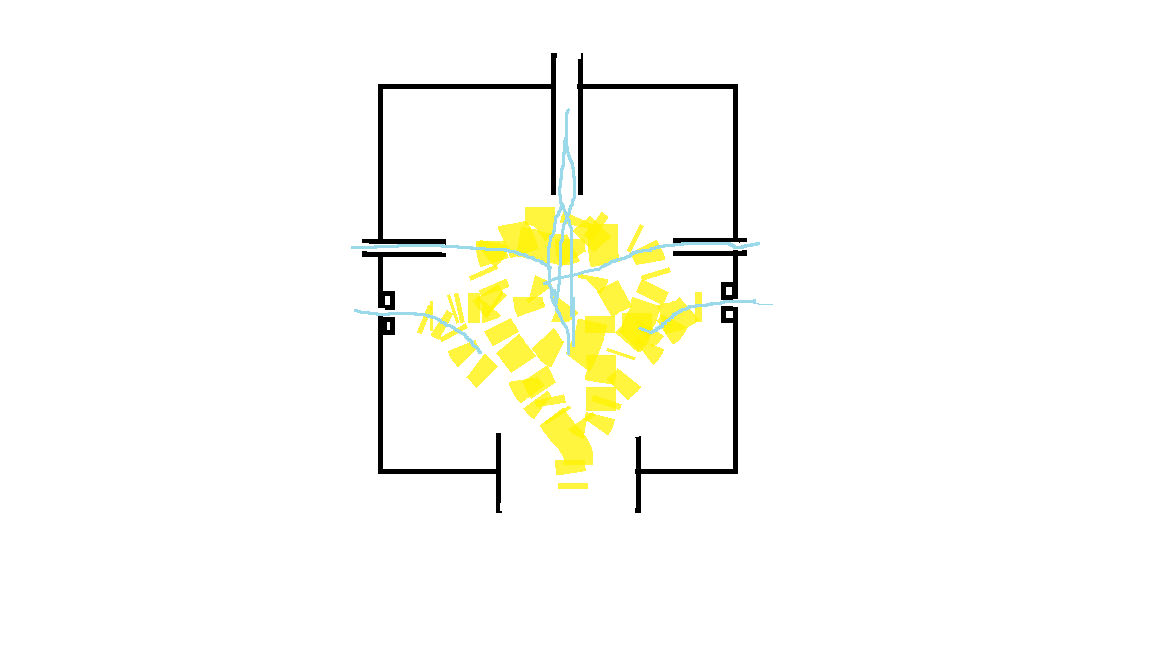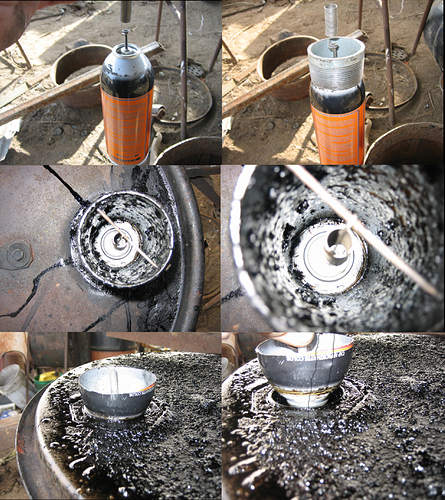Hi Kristi, How are you catching the condense? Could you add cooling fins to the outside of the hopper? Could put them just where they will fit.
Great walkaround and ride video Kristijan. Looking again at the video I can see where you can put some hopper cooling tubes above the cyclone filter in front of the hopper. Bring air in from the bottom and directing it up and over the top of the gasifier unit. You might build a air scoop at the bottom to direct air while moving down the road and also have a fan when idling in traffic. Bend the insulation a little and it would make room for more tubes on the other side of the gasifier hopper. Make sure you put fins on the tubes, it made a big difference in how my works now with fins added.
I think you have won the DOW award, FIRST place on how much you can put in a small box, and hide it. It still looks like a carrier rack box on the back of your car. Great job.
Bob
Bob, do you have measurement numbers on volume before and after the fins?
Hi Al,
You mean the post gasifier condensate? The usual way… cooling rail and hayfailter
You mean on the hopper?
Bob,
Thanks for the award 
Hmm unfortunaly the place in front will most likely be all used up by thenew hopper. His one is much too small.
The place left is reserved for a final filter.
Like you sayd, supersmall system, but super hard to fit it all in.
I am thinking of a second outside grill like you suggested a while back. A question thugh. What happens inside the tubes in terms of tar buildup? Has anyone looked in after use?
I wuld hate to plugg it all up in a matter of days…
I think any verticlal surface will only be coated with 1-2 mm of tar. I have a very tiny drain, but vertical. Never plugged.
Did a litle testing today with the bubbler.
Rinsed the hayfilter clean, then added clean water. Burned about 1 hopper, drained again. WOW the water was black as old engine oil. Looks like it does do some work.
Still havent made a venturi thugh-l think this might be a bullseye.
Interasting thing happened yesterday… l run the gasifier highidle, idle and occasional reved it with the hopper lid open. Just put in as much wood as it combusted. l saw all the action in the hearth in person, was preety to look. The engine ran so smooth. Idled for more thain half a hour, then reved up like it was eating petrol. No hasitation what so ever.
When l put the lid on, ewerything went downhill. Idled for a minute or two, then started to loose rpm and slowly dyed. A lot of hasitation with sudden reving. Then lid off, great agen.
What is happening??
Hello Kristijan
My first thoughts are nozzles too small or some type of restriction in the gasifier fresh air supply .
Also could be not enough depth from nozzles to restriction. ?
Edit , If you are adding just enough fuel as it is being consumed the gasifier will operate fine , just no incoming air being preheated .
Hi Kristi, The hopper, didn’t know if you had gutters, or double wall hopper. Fins would help a lot to cool especially with a fan.
Hi Wayne,
Nozzles shuld have a total surface area of about 4cm2 by the lmbert table, myne are 5,5cm2 so shuld be big enough. But it is possible something else is restricting the flow. The non return flap maybe…
Hmm the other is possible too. But shuldnt the big char reserve buffer that?
l was thinking wood piroliseing and steaming in a hot enviroment without the chance of the gas to equalize its pressure, throwing the A/F ratio off.
l guess the cure to that is a cool condensing hopper. Need to do some more testing.
Guys, one more thing. Maybee a funny question but here it goes. What is soot?
When l looked at my sooty water, the first thing l thod about is “sparks” of charcoal cooled down in the oxy depleted enviroment but further observations got me thinking its just so fine! Invisibly small particles. Is it possible this is the resault of CO brakeing back to CO2 and C at high temperature?
Yep, you’ll get some of both. Carbon from charcoal dust is pretty fine also, and carries some mineral ash with it. Pure C will oxidize to almost nothing. Hit the dust with a torch and see what you find, if it turns white there’s at least some charcoal powder in there.
On the air restriction, remember that the WK pours air in like a garden hose from each nozzle. It would be considered “too much” air by traditional charts. Imbert tables are designed to restrict the inlet flow, to force a high velocity “spray” of air into the char bed (thumb over the garden hose).
When you open the lid, you’re allowing unlimited air to the gasifier, so it can breathe. This is like a FEMA.
This “thumb over the hose” effect l tryed to eliminate or buffer with the bigger nozzle area, ring of fire, while still have good lmbert penetration with the 3 deeply protruding nozzles. l tryed to blow in the air intake, l realy culdnt feel much resistance to my mouth (when l built the hearth) so this is what makes me wonder.
Ofcorse, l do preheat the air a lot now.
Is this what @Wayne wanted to say upstairs?
Man l wuld love to put a WK on… I love its chatracteristics. But the firetube its self wuld be as long as the whole gasifier l use now 
Ok, too soon to make any sudden jimps, but this crosses my mind right now.
l culd allso screw out the 3 toop deeply protrudeing nozzles.
Just a brainstorm 
Edit:
This top “nozzle” culd allso serve as a lightning port, a much needed feature since l am arrangeing things with a friend to make me a light TIG welded 70l (17gal) hopper. May not sound like much, with a fuel consumption of those engines lighting a gasifiers sometimes means puting a lot of wood out first.
Did anyone ever calculate the volume difference of incoming air compared to the volume of outgoing gas? A hopper full of wood compared to the small amount of ash left after gasification added to the volume of incoming air should calculate to a percentage volume increase - right?
Nope. Think about a basic example… steam. The volume of water as it turns to steam increases by about 1700 times.
Wood turning to woodgas will do similarly. The gas coming out is much greater than the volume of air + the volume of wood.
l did a while ago. lf l remember right, the number is about 1 part air 2 part gas.
Wayne used to do something like that top nozzle, only it was spring loaded to allow air in through the hopper lid during heavy acceleration. You could do something similar. I’ll try and find a picture.
EDIT: Here we go…
Hi, Kristijan!
3.4.2017
You are partly back on Imbert 1926!
If you can afford to “invest” on easier ash removal,
put a “grill” of 12mm angleirons 30mm abowe the siporex plate!
The angleirons (pref. SS) should have short bits of square tube tightly attatched (welded) on their ends.
Angle irons tightly inside the square-bits!
The square-bits in both ends = broder slots,
square-bits in each second end = narrower slots.
This keeps them uppright in a horizontal ring of U-bar.
The U-bar is bent to a wheel where the profile is open horizontally inwards toward the ring-center.
You can weld the U-profile together, and cut one only slot in the profile, to be facing downwards. One side of the profile (downward) gets a slot broad to fit and pass the square bit in the end of the anglebars.
You put in the prepared angleirons, one by one, the shortest first, on each side of the cut-out slot.
The last one comes in the center.
Then you shake the assemly (turned upside down) (leaning on a small diameter bucket) and turn whole the angle-iron package 90 degrees in respect to the U-profile ring, which carries them!
The angle irons are easy to change, if you leave enough play inside the U-profile ring…
Don,
l did a fast calculation. A pound (500g) of wood uses 1500l of air to produce 2300l of woodgas. A wery aproximate calculation.
Chris,
if l understand right, this alows air in the hopper its self? A FEMAnised sistem? Good idea thugh.
And thank you for the pictures!
Max,
Have you maybee got any documentation on the old lmbert gasifiers?
Good ideas, l need a couple of rereads thugh, but this is for long term ash removal right?
What about ash cleaning ports? Bottom port is a no go.
Would that be cool or hot air?
Same temperature of gas and air. 60mol of air gives 90mol of gas.

